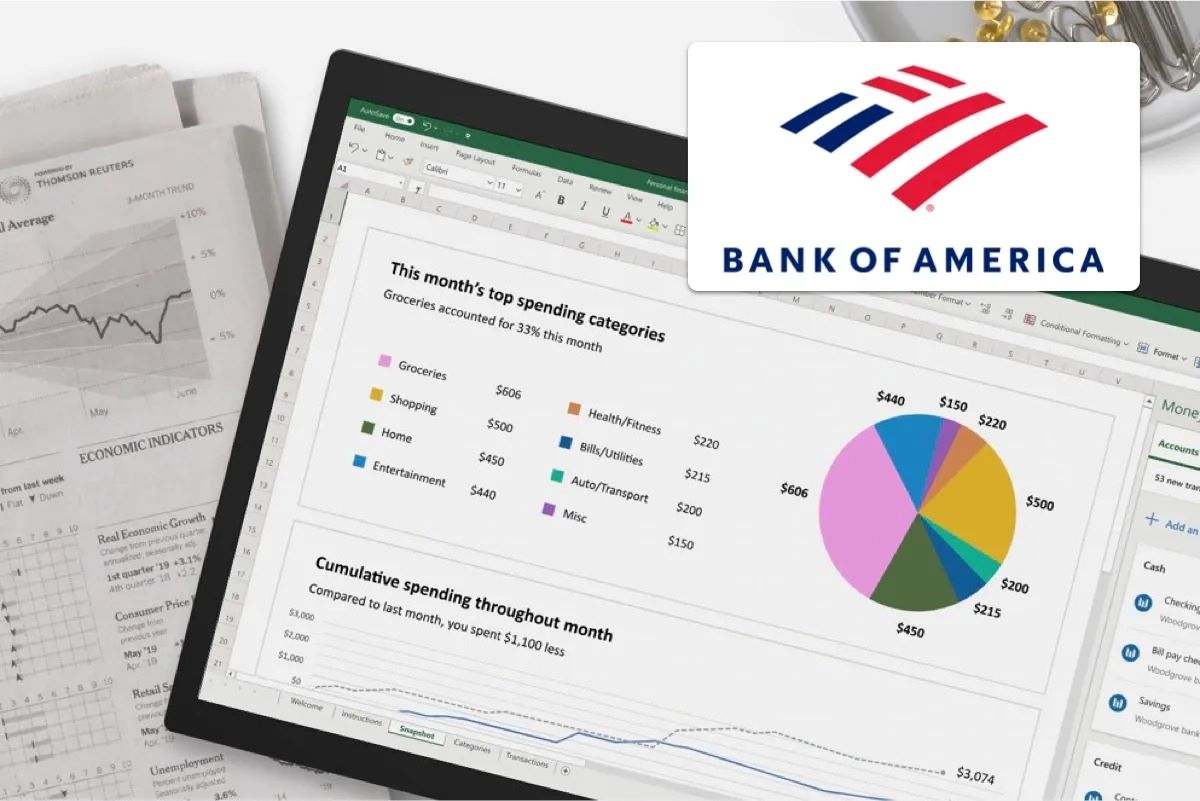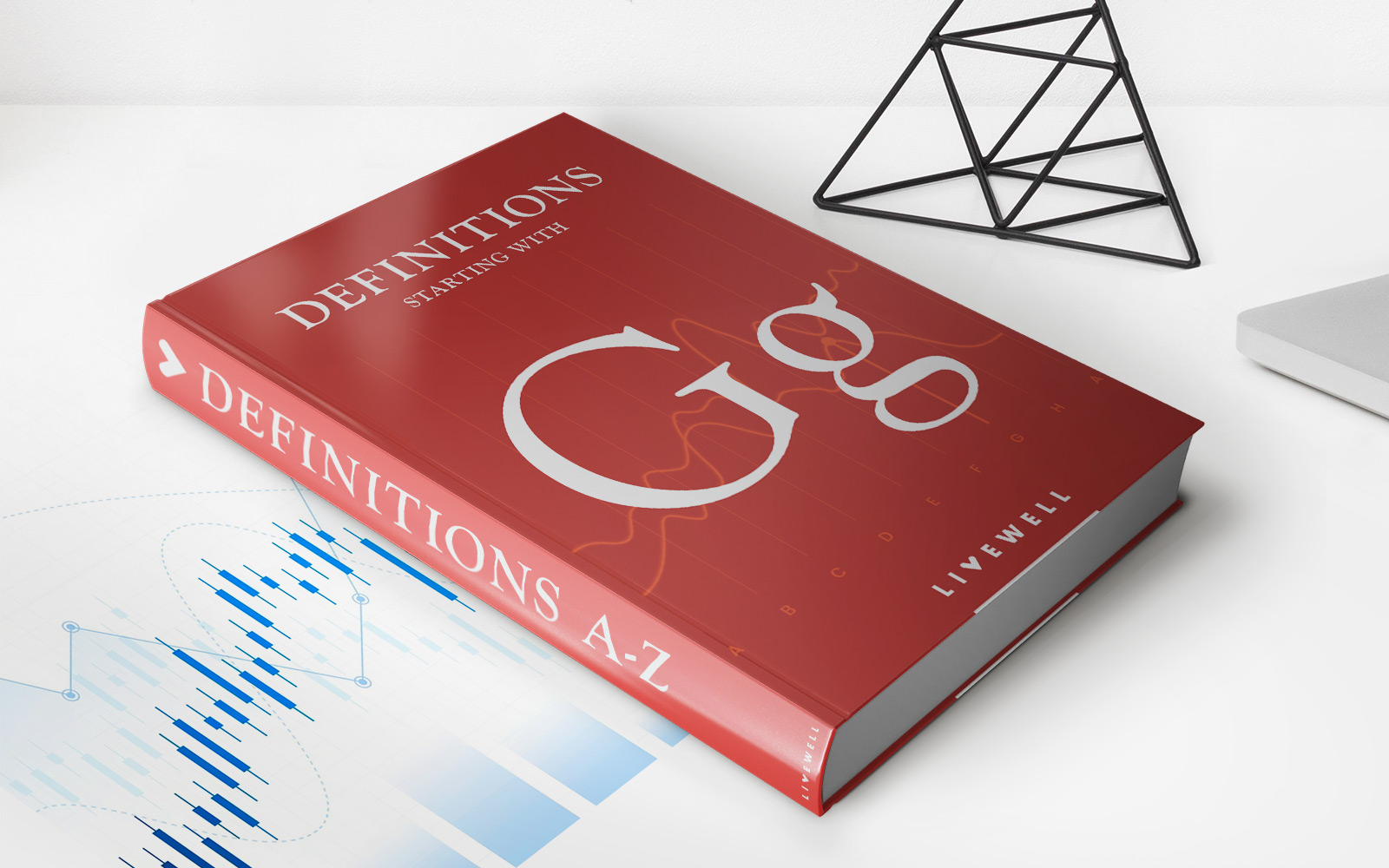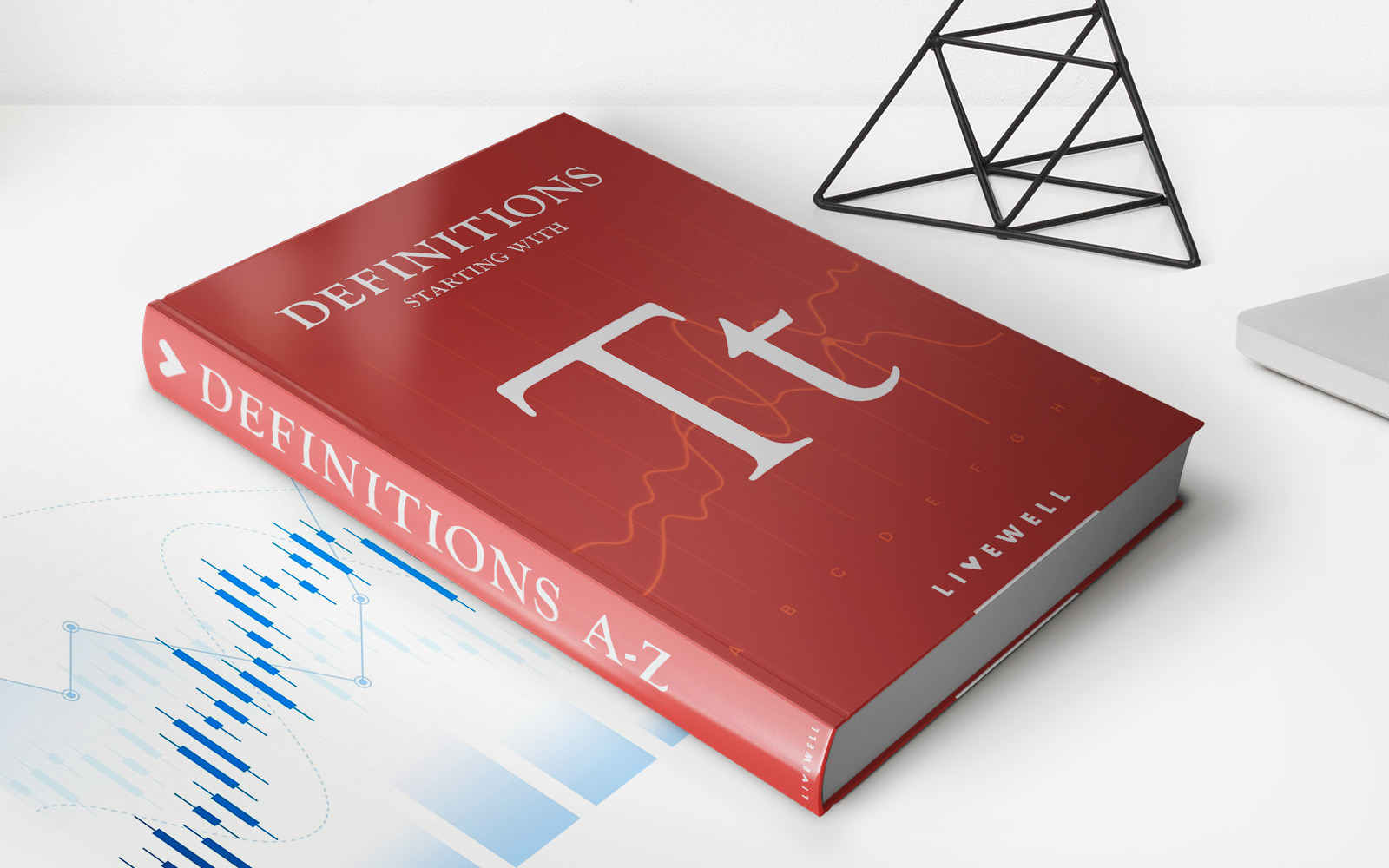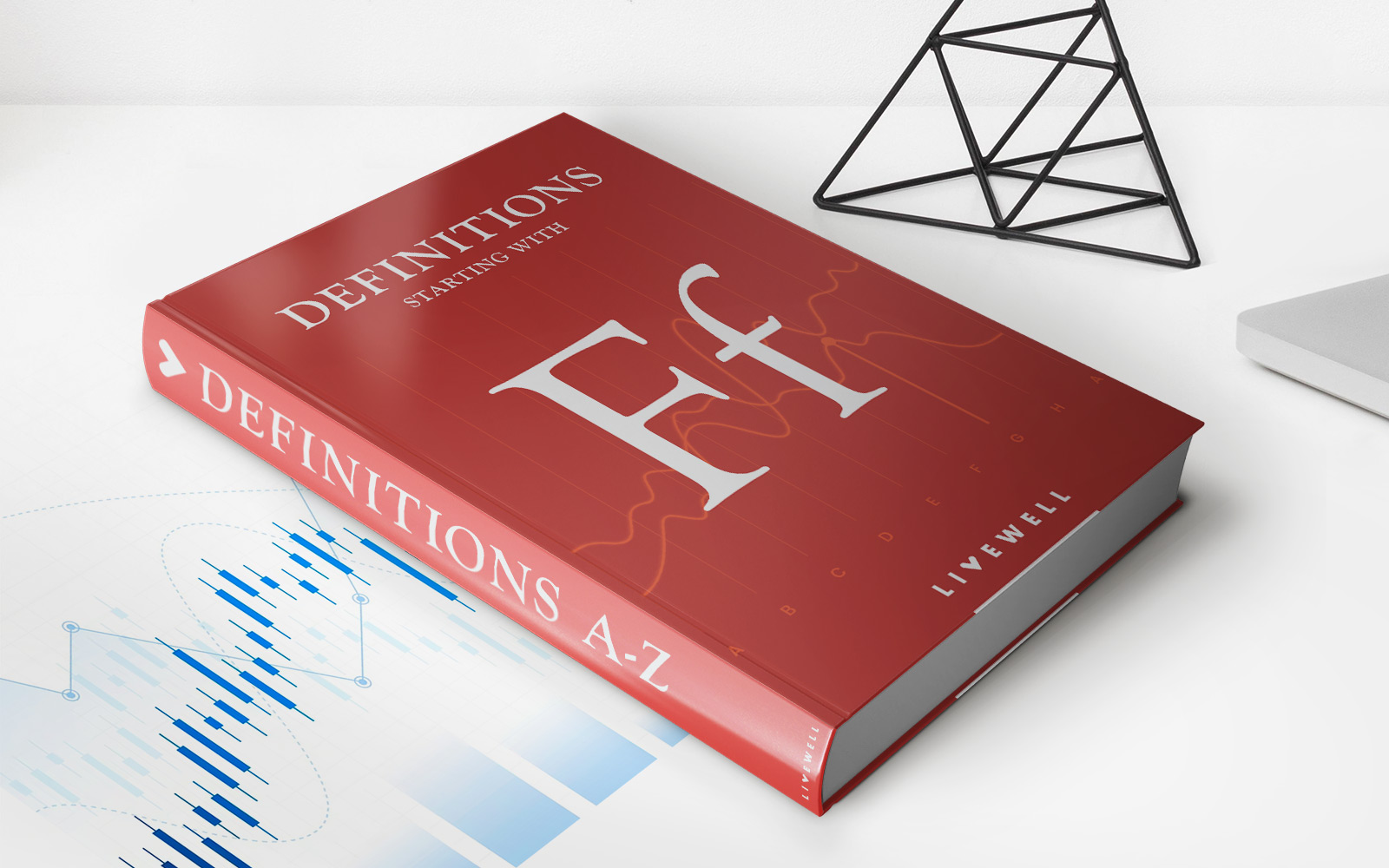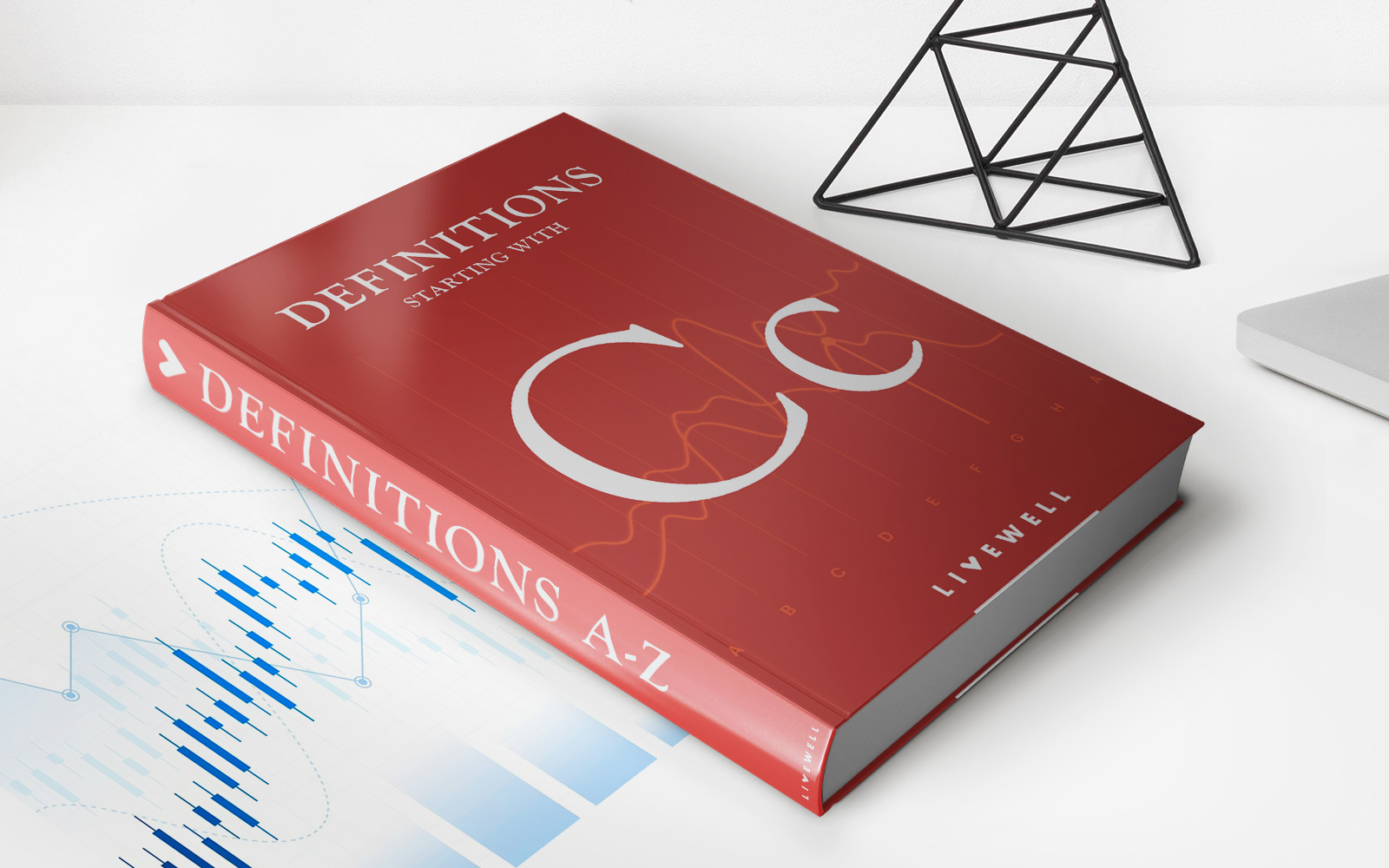

Finance
What Do Insurance Inspectors Look For
Published: November 21, 2023
Learn what insurance inspectors look for when assessing your property. Find out how to prepare and ensure your finances are protected.
(Many of the links in this article redirect to a specific reviewed product. Your purchase of these products through affiliate links helps to generate commission for LiveWell, at no extra cost. Learn more)
Table of Contents
Introduction
Insurance inspections play a crucial role in the underwriting process for insurance companies. These inspections are conducted to assess the condition of a property and determine the potential risks associated with insuring it. Insurance inspectors, who are experts in their field, are responsible for conducting thorough evaluations of both the exterior and interior of a property. Their findings help insurance companies determine appropriate coverage levels and premiums.
The primary purpose of insurance inspections is to gather information about the property, identify potential hazards, and assess the overall risk involved in insuring it. This information is then used by insurance underwriters to make informed decisions about coverage and pricing. While the specific requirements may vary depending on the insurance company and policy type, there are certain common areas that inspectors typically focus on during their assessment.
In this article, we will explore the key elements that insurance inspectors look for during their inspections. By understanding what these professionals pay attention to, homeowners can better prepare their properties and potentially lower their insurance costs. From the exterior inspection, which includes the roof, siding, windows, doors, and foundation, to the interior inspection that covers walls, ceilings, flooring, plumbing, electrical systems, heating and cooling systems, and fire safety measures, we will provide a comprehensive overview of the areas that insurance inspectors scrutinize.
Knowing what insurance inspectors look for can be beneficial for homeowners. Addressing any potential issues before an inspection can help to mitigate risks and ensure that the property is adequately protected. Additionally, making improvements to increase safety and reduce the risk of damage can potentially lead to lower insurance premiums.
Now, let’s dive deeper into the specific areas of focus for insurance inspections, starting with the exterior inspection of the property.
Purpose of Insurance Inspections
Insurance inspections serve a vital purpose in the insurance industry by providing insurers with accurate and detailed information about a property’s condition. The primary objectives of insurance inspections include:
- Assessing risk: Insurance companies need to evaluate the potential risks associated with insuring a property. Inspections help identify any existing hazards or vulnerabilities that could increase the likelihood of an insurance claim. By understanding the risks, insurers can determine the appropriate coverage levels and premiums.
- Determining insurability: Insurance inspections help determine whether a property is eligible for coverage. Insurers need to assess the property’s condition, maintenance, and adherence to safety standards to decide whether they can provide insurance coverage. Properties that have significant risks or unsafe conditions may be deemed ineligible for coverage or require specific improvements before coverage can be granted.
- Evaluating replacement costs: Insurers need to determine the replacement cost of a property in case of a total loss. Insurance inspections can help assess the size, quality, and features of the property, which are crucial factors in calculating its replacement value. Accurately estimating the replacement cost ensures that the property is adequately insured.
- Preventing fraud: Insurance inspections help detect potential fraud attempts. Inspectors are trained to identify signs of fraudulent activity, such as misrepresentation of property conditions or intentional damages. By thoroughly examining a property, inspectors can ensure that all information provided by the property owner is accurate and reliable.
- Promoting safety and risk mitigation: Insurance inspections encourage property owners to maintain a safe environment and mitigate risks. Inspectors check for compliance with safety regulations, such as building codes and fire safety measures. Their findings can help identify potential hazards that need to be addressed to minimize the risk of accidents or damage.
Overall, insurance inspections are conducted to gather essential information about a property’s condition, assess risks, determine insurability, calculate replacement costs, prevent fraud, and promote safety. By conducting thorough inspections, insurance companies can make informed decisions about coverage and premiums, and property owners can ensure that their properties meet the necessary requirements for insurance coverage.
Exterior Inspection
During an insurance inspection, one of the first areas that an inspector will evaluate is the exterior of the property. This includes the roof, siding, windows, doors, and foundation. The condition of these elements plays a significant role in the overall safety and insurability of the property.
Roof: The roof is one of the most critical components of a property. The inspector will assess its condition, looking for any signs of damage, such as missing or damaged shingles, leaks, or sagging. They will also check for proper ventilation and ensure that the roof is in good repair to prevent water damage and potential insurance claims.
Siding: The siding of a property not only enhances its aesthetics but also provides protection against the elements. Inspectors will examine the siding for signs of deterioration, cracks, or rot. They will also look out for any areas where moisture might be trapped, as this can lead to more significant problems like mold growth or structural damage.
Windows and Doors: Inspectors will inspect the windows and doors to ensure that they are properly sealed, in good working condition, and free from any signs of damage or decay. They will check for tight weatherstripping to prevent energy loss and verify that all locks and latches are functioning correctly to enhance security.
Foundation: The foundation of a property is essential for its structural integrity. Inspectors will carefully examine the foundation for any cracks, bulges, or signs of shifting. They will also inspect the drainage system around the foundation to ensure that water is properly directed away from the property to prevent moisture-related issues.
During the exterior inspection, the inspector will document any issues or concerns they find and make note of any repairs or improvements that may be necessary. This information will be used by the insurance company to evaluate the overall risk and determine insurance coverage and premiums. It’s crucial for homeowners to address any identified issues promptly to maintain a safe and insurable property.
Roof
During an insurance inspection, one of the key areas that inspectors thoroughly examine is the roof. The condition of the roof plays a significant role in determining the insurability and overall safety of a property. Insurance inspectors assess various aspects of the roof to ensure that it is in good condition and able to withstand potential risks.
The inspector will start by assessing the overall age and condition of the roof. They will look for any visible signs of damage, such as missing or damaged shingles, curling or buckling, or areas of deterioration. These issues can be indicators of potential leaks or a compromised roof structure.
Inspectors will also examine the flashing, which is the weatherproof barrier installed around any roof penetrations, such as vents, chimneys, or skylights. Properly installed flashing prevents water from seeping into the structure by directing it away. Inspectors will check for any signs of loose or damaged flashing, as this can lead to water infiltration and potential water damage.
Another aspect that inspectors pay close attention to is the roof’s ventilation system. Adequate ventilation is crucial for maintaining the health of the roof and preventing moisture-related issues. Inspectors will check for the presence of vents and ensure that they are properly installed and functioning. Improper ventilation can lead to the accumulation of excess moisture, which can contribute to mold growth or premature deterioration of the roof materials.
Furthermore, inspectors will assess the gutters and downspouts connected to the roof. These components are responsible for diverting water away from the property’s foundation. Inspectors will check for any clogs or damage that could impede proper drainage and lead to water pooling or overflow, potentially causing water damage to the property.
Ultimately, insurance inspectors evaluate the overall condition of the roof to determine its ability to withstand potential risks, such as severe weather events. They are looking for any issues that could increase the likelihood of leaks or require costly repairs in the future. By understanding the condition of the roof, insurance companies can assess the risk involved and determine appropriate coverage levels and premiums.
Homeowners should regularly maintain their roofs to ensure their longevity and to address any potential problems promptly. Regular inspections, maintenance, and repairs can help prevent larger issues and extend the lifespan of the roof. Additionally, maintaining a well-maintained roof can potentially lead to lower insurance premiums, as it demonstrates to insurers that proactive measures have been taken to reduce the risk of damage.
Siding
During an insurance inspection, the condition of the property’s siding is carefully assessed by insurance inspectors. The siding not only contributes to the aesthetic appeal of a home but also serves as a protective barrier against the elements. Insurance companies prioritize the assessment of siding as it plays a crucial role in safeguarding the structure of the property.
Inspectors will inspect the siding for signs of deterioration, cracks, rot, or discoloration. They will carefully examine the condition of each siding material, such as vinyl, wood, brick, or stucco, ensuring that it remains intact and adequately protects the underlying structure.
Moisture-related issues are a significant concern when it comes to siding. Inspectors will look for any areas where moisture might be trapped or infiltrating behind the siding. Moisture can lead to substantial damage, including mold growth, rot, and decay, which can compromise the structural integrity of the property.
Inspectors also evaluate the quality of installation, as improperly installed siding can create gaps or spaces that allow moisture to penetrate. They will check for tight seams and secure fastenings to ensure that the siding is correctly installed and provides optimal protection against weather conditions.
Additionally, inspectors pay close attention to the maintenance and upkeep of the siding. They will look for signs of neglect, such as peeling paint, loose or damaged siding panels, or areas where repairs are needed. Regular maintenance, such as cleaning and painting, not only enhances the appearance of the property but also helps to preserve the lifespan of the siding.
It’s important for homeowners to address any issues or concerns identified during the siding inspection. Timely repairs or replacements may be necessary to maintain the property’s insurability and minimize the risk of potential damage. Taking proactive measures to ensure that the siding remains in good condition can contribute to lower insurance premiums by reducing the risk of water intrusion, mold, and structural problems.
Overall, the condition and quality of the siding are key factors considered by insurance inspectors during their evaluation. By properly maintaining and addressing any necessary repairs to the siding, homeowners can protect their property, improve its curb appeal, and potentially save on insurance costs in the long run.
Windows and Doors
During an insurance inspection, the condition of the windows and doors is closely examined by inspectors. Windows and doors not only provide security and access to a property but also contribute to its energy efficiency and overall safety. Inspectors evaluate several key factors related to windows and doors to determine the insurability and risk level of a property.
Inspectors will thoroughly examine the condition of the windows and doors, looking for any signs of damage, decay, warping, or malfunction. They will check for cracks in the glass, broken seals, or any other visible issues that may affect the performance and efficiency of these openings. Ensuring that windows and doors are in good working condition reduces the risk of water intrusion, air leaks, and potential security breaches.
Proper sealing is a crucial aspect that inspectors pay attention to. They will check for weatherstripping around windows and doors to ensure a tight seal, preventing drafts and improving energy efficiency. Inspectors may also assess the quality of the insulation around the windows and doors to ensure that they provide adequate thermal protection.
In addition to the physical condition of the windows and doors, inspectors will also evaluate their functionality and security features. They will test the operation of windows and doors, ensuring that they open and close smoothly and securely. Inspectors will check for proper locks, latches, and other security measures in place to protect the property and its occupants.
Furthermore, inspectors will assess the presence of safety features such as tempered glass on certain windows, especially in areas prone to impact or breakage risks. Compliance with safety standards, particularly for properties located in high-risk areas or with specific insurance requirements, is an important consideration for insurance underwriters.
Homeowners should regularly maintain and repair windows and doors to ensure their proper functioning and longevity. Addressing any identified issues promptly, such as replacing damaged glass or repairing faulty hardware, helps to maintain the security, energy efficiency, and insurability of the property.
By having well-maintained windows and doors, homeowners can potentially reduce the risk of break-ins, improve energy efficiency, and lower the likelihood of water damage. Taking proactive measures to address any concerns related to windows and doors not only enhances the safety and comfort of the property but can also result in insurance cost savings in the long run.
Foundation
When conducting an insurance inspection, one crucial area that inspectors thoroughly evaluate is the foundation of the property. The foundation serves as the structural support for the entire building, making it a critical component in determining the safety and stability of a property.
Inspectors will carefully examine the foundation for any visible signs of damage or structural issues. They will look for cracks, bulges, or shifting, which can indicate foundation settlement or other problems. These issues can compromise the stability of the structure and may lead to structural damage if not addressed.
In addition to visible damage, inspectors will also assess the drainage system around the foundation. Proper drainage is essential to keep water away from the property and prevent moisture-related problems such as flooding, erosion, or water intrusion. They will check for the presence of gutters, downspouts, and correctly positioned grading, ensuring that water is effectively directed away from the foundation.
Inspectors will also examine the condition of any visible foundation components, such as concrete footings or crawl spaces. They will look for signs of deterioration or damage, including cracks in the concrete or sagging in the crawl space. These issues can indicate potential structural weaknesses or inadequate support.
Furthermore, inspectors may inquire about any previous foundation repairs or improvements that have been made to the property. They will assess the quality and effectiveness of these repairs to ensure that they were done correctly and have not compromised the overall stability of the foundation.
It is important for homeowners to promptly address any foundation issues identified during the inspection. Hiring a professional foundation contractor to assess and make proper repairs is crucial for maintaining the integrity of the structure. Neglecting foundation problems can result in further damage to the property and may impact its insurability.
By ensuring that the foundation is in good condition and that proper drainage measures are in place, homeowners can minimize the risk of structural damage and potential water-related issues. A well-maintained foundation not only contributes to the overall safety of the property but also increases its insurability.
Remember that an insurance inspection is not meant to replace a comprehensive assessment by a structural engineer or foundation specialist. If significant concerns are raised during the inspection, it is advisable to seek further professional evaluation to determine the extent of any potential issues and to develop an appropriate course of action.
Interior Inspection
During an insurance inspection, the interior of the property is thoroughly evaluated by insurance inspectors. This inspection is designed to assess the overall condition, safety, and functionality of the interior elements and systems of a property. Inspectors will examine various areas within the property to ensure that they meet safety standards and are in good working order.
Inspectors will start by evaluating the walls and ceilings. They will look for any visible signs of water damage, cracks, or structural issues. They will also check for peeling paint, indications of mold or mildew, and properly functioning smoke detectors. Properly maintained and sturdy walls and ceilings contribute to the structural integrity and safety of the property.
The flooring will also be inspected. Inspectors will assess the condition of the flooring materials, looking for any signs of damage, unevenness, or decay. They will pay attention to potential tripping hazards and evaluate the quality of the flooring installation. The overall condition and maintenance of the flooring contribute to the safety and aesthetics of the property.
The plumbing system is another crucial aspect of the interior inspection. Inspectors will check for any leaks, water stains, or signs of plumbing problems. They will evaluate the functionality of sinks, toilets, showers, and bathtubs, ensuring that they operate properly and do not pose any safety risks. A well-maintained plumbing system minimizes the risk of water damage and potential accidents.
The electrical system will also be thoroughly examined. Inspectors will assess the condition of the wiring, outlets, and panels, checking for any potential safety hazards such as exposed wiring or overloaded circuits. They will confirm that GFCI (Ground Fault Circuit Interrupter) outlets are installed in appropriate areas, such as kitchens and bathrooms, for enhanced safety. A properly functioning and up-to-code electrical system reduce the risk of electrical fires and other hazards.
Inspectors will evaluate the heating and cooling systems to ensure their functionality and compliance with safety standards. They will inspect the furnace, air conditioning unit, and any other heating or cooling equipment, checking for any signs of damage or malfunction. Properly maintained and functioning heating and cooling systems contribute to the comfort and habitability of the property.
Finally, inspectors will assess the fire and safety measures within the property. They will check for the presence and proper placement of smoke detectors and fire extinguishers. Inspectors will also assess the accessibility of emergency exits and stairways to ensure they meet the necessary safety standards.
Homeowners should ensure that all interior elements and systems are well-maintained and in good working order to pass the insurance inspection. Regular maintenance, prompt repairs, and adherence to safety standards can contribute to a safer and more insurable property as well as potentially lead to lower insurance premiums.
It’s important to note that an insurance inspection focuses on the general condition and functionality of the interior elements and systems. If specific concerns or issues arise during the inspection, homeowners may need to seek further evaluation or repair by specialized professionals.
Walls and Ceilings
During an insurance inspection, the walls and ceilings of a property are carefully examined by inspectors. These structural elements not only contribute to the overall appearance of the interior but also play a vital role in ensuring the safety and integrity of the property.
Inspectors will assess the condition of the walls and ceilings, inspecting for any visible signs of damage, such as cracks, water stains, or bulges. They will look for any indications of structural issues or potential hazards that could compromise the stability of the property. Additionally, inspectors will check for peeling paint or wallpaper, which can be a sign of water damage or lack of proper maintenance.
Inspectors will also pay attention to the presence of mold or mildew on walls and ceilings. Mold growth can be a result of moisture intrusion, improper ventilation, or plumbing issues. The presence of mold not only poses health risks to occupants but can also signal potential water damage within the property.
In terms of safety measures, inspectors will ensure that smoke detectors are properly installed and functioning. They will evaluate the placement of smoke detectors to ensure they are strategically positioned throughout the property to provide adequate coverage and early detection of potential fires.
Inspectors may also assess the presence of carbon monoxide detectors if required by local regulations or the homeowner’s insurance policy. Carbon monoxide is a tasteless, odorless gas that can be produced by faulty combustion appliances, such as furnaces or water heaters. The proper installation of carbon monoxide detectors can alert occupants of potentially harmful levels of carbon monoxide in the property.
Addressing any issues identified during the inspection is essential to ensure the safety and insurability of the property. Homeowners should promptly handle repairs or improvements required for the walls and ceilings. This may involve patching cracks, addressing water leaks, and performing necessary maintenance tasks.
Regular maintenance, such as repainting walls and ceilings, can help maintain their appearance and protect against potential damage. It is important for homeowners to take proactive measures to keep the walls and ceilings in good condition, ensuring the safety and aesthetic value of the property.
By maintaining well-kept walls and ceilings, homeowners can potentially reduce the risk of water damage, mold growth, and other safety issues. This, in turn, can lead to lower insurance premiums by demonstrating a responsible approach to property maintenance and mitigating potential risks.
Flooring
During an insurance inspection, the condition and quality of the flooring within a property are evaluated by inspectors. The type, condition, and installation of the flooring play a crucial role in both the safety and overall value of the property.
Inspectors will examine the flooring material, such as carpet, hardwood, laminate, or tile, to assess its condition. They will look for any signs of damage, wear and tear, or deterioration. Inspectors will check for loose or broken tiles, gaps in hardwood flooring, or stains and fraying in carpets. Any significant damage can impact the overall safety and functionality of the flooring.
The presence of uneven or sagging floors may also be a concern during the inspection. This could indicate structural problems, such as foundation issues or joist damage. These issues may require further evaluation by a structural engineer or foundation specialist to determine the extent of the problem.
Inspectors will also evaluate the installation quality of the flooring. They will check for loose or poorly installed flooring materials that may pose a tripping or safety hazard. Proper installation ensures that the flooring is secure and provides a stable surface for occupants to walk on.
In terms of safety, inspectors may assess the suitability of the flooring for specific areas, such as bathrooms or kitchens. They will look for the presence of non-slip surfaces in areas prone to moisture, as well as the existence of adequate floor coverings to prevent slipping and falling accidents.
Homeowners should regularly maintain their flooring to ensure its longevity and safety. Regular cleaning, patching any damages, and addressing any necessary repairs are important steps in maintaining the flooring’s condition. Additionally, homeowners should consider refinishing or replacing flooring materials that are significantly damaged or worn to reduce the risk of accidents and maintain the property’s overall aesthetic appeal.
Ensuring well-maintained flooring can have several benefits, including improved safety, enhanced comfort, and increased property value. It can also positively impact insurance coverage and premiums as it demonstrates responsible ownership and reduces potential risks.
Overall, homeowners should strive to keep their flooring in good condition by addressing any identified issues promptly. Taking proactive measures to maintain the quality and safety of the flooring contributes to the overall livability and insurability of the property.
Plumbing System
During an insurance inspection, the plumbing system of a property is carefully evaluated by inspectors. The plumbing system plays a vital role in providing water supply and drainage throughout the property, making its condition and functionality crucial for the overall safety and habitability of the home.
Inspectors will examine various components of the plumbing system, including pipes, fixtures, water heaters, and drainage systems. They will check for any visible signs of leaks, corrosion, or damage. Inspectors will also assess the quality of installation and ensure that the plumbing meets local building codes and safety standards.
The water supply lines will be inspected to verify their condition and functionality. Inspectors will examine the pipes for any signs of leaks, including water stains or damage to walls or floors. Adequate water pressure is another important criterion that inspectors will assess, as it is necessary for proper functioning of toilets, showers, faucets, and other fixtures.
Inspectors will also evaluate the drainage system of the property. This includes assessing the condition of the sewer lines, drains, and vent pipes. They will verify that the drainage system is properly connected, free from obstructions, and effectively removes wastewater from the property. Issues with the drainage system, such as clogs or backups, can lead to water damage and potential health hazards.
The functionality of plumbing fixtures, such as sinks, toilets, showers, and bathtubs, will be tested during the inspection. Inspectors will ensure that these fixtures are in good working condition and properly connected to the plumbing system. They will also check for any signs of leaks or inadequate water flow.
Additionally, inspectors may pay attention to the presence of backflow prevention devices. These devices prevent wastewater from flowing back into the potable water supply, safeguarding against contamination. Compliance with local regulations or insurance requirements may dictate the necessity of such devices in specific properties.
Overall, homeowners should regularly maintain their plumbing systems to ensure optimal functionality and avoid potential issues. Promptly addressing any leaks, clogs, or other plumbing problems can help prevent water damage, minimize the risk of further damage, and contribute to the property’s insurability.
By maintaining a well-functioning plumbing system, homeowners can reduce the potential for costly water-related damage and demonstrate responsible property ownership. This can positively impact insurance coverage and potentially lead to lower insurance premiums.
Remember, an insurance inspection focuses on assessing the general condition of the plumbing system. In the event of significant concerns or the need for specialized evaluations, homeowners may need to consult professional plumbers or experts in the field.
Electrical System
During an insurance inspection, the electrical system of a property is carefully examined by inspectors. The electrical system is a crucial component of any home, providing power for various appliances, lighting, and other electrical devices. Inspectors assess the electrical system to ensure that it meets safety standards and poses no hazards to the property and its occupants.
Inspectors will evaluate the condition of the electrical panel, usually located in the basement or garage. They will check for any signs of damage, such as rust, corrosion, or overheating. Inspectors will also assess the functionality of circuit breakers and ensure that they are properly labeled and sized for the electrical load of the property.
The wiring within the property is also carefully examined. Inspectors will check for the presence of outdated or unsafe wiring materials, such as knob-and-tube wiring or aluminum wiring. They will look for any visible signs of damage, such as frayed or exposed wires, or improper splicing. These issues can increase the risk of electrical fires or electric shock hazards.
Inspectors will assess the outlets and switches throughout the property. They will test the functionality of these devices, ensuring that they are properly grounded and wired correctly. The presence of Ground Fault Circuit Interrupter (GFCI) outlets, especially in areas with water sources like bathrooms and kitchens, will also be checked for enhanced safety.
Homeowners should ensure that their electrical system is regularly maintained and in compliance with local electrical codes and safety standards. Promptly addressing any identified electrical issues, such as replacing damaged wiring or outlets, can help prevent potential hazards and ensure the safe operation of the electrical system.
It is recommended that homeowners consult a licensed electrician to conduct regular inspections, make necessary repairs, and perform any electrical work. This ensures the expertise and adherence to safety standards when dealing with the electrical system.
By maintaining a safe and up-to-code electrical system, homeowners can reduce the risk of electrical fires, electrocution, and other electrical hazards. This proactive approach to electrical safety can positively impact insurance coverage and potentially result in lower insurance premiums.
Remember, an insurance inspection evaluates the overall condition and safety of the electrical system. In the event of significant concerns or specific electrical system requirements, homeowners may need to consult specialized electricians or experts in the field.
Heating and Cooling Systems
During an insurance inspection, the heating and cooling systems of a property are thoroughly evaluated by inspectors. These systems are essential for maintaining a comfortable living environment and are integral to the overall functionality and habitability of the property.
Inspectors will examine the condition and functionality of the heating system, which may include a furnace, boiler, or heat pump. They will assess the overall condition of the system, checking for any signs of damage or wear, and ensuring that it is in good working order. Inspectors will also evaluate the cleanliness of the system, including checking filters and inspecting ductwork.
The cooling system, typically an air conditioner or heat pump, will also be examined by inspectors. They will assess the overall condition and functionality of the cooling system, ensuring that it is capable of providing adequate cooling during warm weather. Inspectors will check for signs of damage or wear, such as refrigerant leaks or malfunctioning components.
Inspectors will also evaluate the proper installation and ventilation of the heating and cooling systems. They will check for compliance with local building codes and safety standards. Adequate ventilation is crucial for efficient operation and preventing potential hazards, such as carbon monoxide buildup or poor air quality.
Energy efficiency is another important aspect of the assessment. Inspectors may evaluate the energy efficiency of the heating and cooling systems, checking for energy-efficient features, proper insulation, and programmable thermostats. Energy-efficient systems can contribute to lower utility bills and may be rewarded with lower insurance premiums.
Proper maintenance of the heating and cooling systems is crucial for both their functionality and longevity. Homeowners should regularly clean or replace filters, schedule routine maintenance, and promptly address any identified issues or needed repairs. Maintaining these systems can help prevent breakdowns, improve energy efficiency, and prolong the lifespan of the equipment.
By ensuring that heating and cooling systems are well-maintained and in good working condition, homeowners can enjoy a comfortable living environment while potentially reducing the risk of system failures and costly repairs. Furthermore, maintaining energy-efficient systems can positively impact insurance coverage and potentially lead to lower insurance premiums.
Remember, an insurance inspection focuses on assessing the overall condition and functionality of the heating and cooling systems. Homeowners should consult licensed professionals for detailed inspections, routine maintenance, and any required repairs or replacements.
Fire and Safety Measures
During an insurance inspection, fire and safety measures within the property are critically assessed by inspectors. These measures are crucial for protecting the property and its occupants from potential hazards and ensuring a safe living environment.
Inspectors will assess the presence and functionality of smoke detectors throughout the property. They will check that smoke detectors are properly installed in the correct locations, such as in each bedroom and common areas. Inspectors may also verify that the smoke detectors are interconnected, meaning that if one detector is triggered, all detectors will sound an alarm. Smoke detectors are essential for early detection of fires and providing the necessary warning to occupants.
Inspectors will also check the presence of fire extinguishers within the property. They will verify that fire extinguishers are properly located in easily accessible areas, such as kitchens or near potential fire hazards. Inspectors may also check the expiration dates and condition of the fire extinguishers to ensure they are in proper working condition.
In addition to smoke detectors and fire extinguishers, inspectors may evaluate other fire safety measures within the property. They may check for the presence of fire sprinklers, especially in commercial or high-rise buildings, as well as the functionality of emergency exit signs and illuminated escape routes.
Inspectors will assess the accessibility and condition of emergency exits within the property. They will ensure that entryways and exits are unobstructed, doors are properly functioning, and escape routes are clearly marked. Inspectors may also check for the existence of emergency lighting in common areas, ensuring that occupants can safely navigate in case of a power outage or emergency situation.
Homeowners should regularly test their smoke detectors and ensure that the batteries are replaced as needed. It is also important to periodically check the expiration dates on fire extinguishers and have them inspected or recharged if necessary. Homeowners should also maintain clear pathways and unobstructed emergency exits to facilitate safe evacuation in case of emergency.
By maintaining proper fire and safety measures, homeowners can significantly reduce the risk of fire-related incidents and provide a safer living environment for themselves and their families. Additionally, demonstrating compliance with fire safety standards can positively impact insurance coverage and potentially lead to lower insurance premiums.
Remember that an insurance inspection primarily focuses on the general presence and functionality of fire and safety measures. In the event of specific concerns or requirements, homeowners may need to consult local fire authorities or fire safety professionals for more detailed assessments and guidance.
Conclusion
Insurance inspections play a crucial role in assessing the condition and risk levels of properties for insurance coverage. Inspectors evaluate various aspects of a property, ranging from the exterior to the interior, to determine its insurability and potential hazards. By understanding what insurance inspectors look for, homeowners can take proactive measures to address any issues and potentially lower their insurance costs.
During an insurance inspection, the exterior of the property is carefully evaluated. Inspectors assess elements such as the roof, siding, windows, doors, and foundation. They look for signs of damage, deterioration, and potential risks that could impact the property’s integrity.
The interior inspection covers essential areas such as walls, ceilings, flooring, plumbing, electrical systems, and safety measures. Inspectors evaluate the condition of these elements, ensuring that they meet safety standards and are in good working order.
It is crucial for homeowners to maintain their property and promptly address any identified issues. By conducting regular maintenance, making necessary repairs, and implementing safety measures, homeowners can mitigate risks and enhance the insurability of their property.
Meeting safety standards and keeping the property in good condition not only reduces the likelihood of insurance claims but also contributes to a safer and more comfortable living environment for homeowners and their families.
Importantly, a well-maintained property demonstrates responsible ownership and can potentially lead to lower insurance premiums. Insurance companies appreciate homeowners who take the necessary steps to mitigate risks and protect their properties.
In conclusion, insurance inspections are designed to assess the overall condition, safety, and functionality of a property. By understanding what inspectors look for and addressing any issues identified during the inspection, homeowners can maintain a safe and insurable property while potentially reducing insurance costs.
Remember, an insurance inspection should not replace comprehensive assessments by specialized professionals, such as structural engineers or electricians. If significant concerns or specific requirements arise during the inspection, homeowners may need to seek further evaluation or expert consultations to ensure the property’s safety and insurability.










